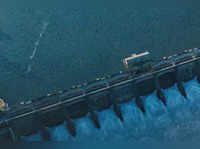NEW DELHI: The power ministry on Friday said the Central Electricity Authority (CEA) has approved the detailed project report of two hydro pumped storage plants — 600 MW Upper Indravati in Odisha and 2,000 MW Sharavathy in Karnataka — in record time.
To fast-track the concurrence process of hydro PSPs (pumped storage projects) in line with ease of doing business drive of the Government of India, the CEA has further revised the guidelines to simplify the process for preparation of DPRs (detailed project reports) of PSPs and its concurrence, a ministry statement said.
According to the statement, the 600 MW Upper Indravati in Odisha is being developed by OHPC Ltd (a Odisha government undertaking) and 2,000 MW Sharavathy in Karnataka is being developed by KPCL (a unit of Karnataka government).
CEA has received a number of proposals of hydro PSPs (around 60 GW), under survey and investigation for preparation of DPRs. All the developers are at various stages of preparation of DPR. After preparation of DPRs, these PSPs will be uploaded by the developers on CEA website for concurrence under section 8 of the Electricity Act, 2003.
According to the ministry, the government has prioritized the development of energy storage systems, particularly PSPs, to ensure the energy security of the country.
As per the National Electricity Plan (Generation), the installed capacity of energy storage systems including BESS is projected at 74 GW by 2031-32.
Under the revised guidelines for approval of DPRs of PSPs, the developers are allowed to submit the DPR online with completion of first 13 chapters. Some of the chapters have been dispensed with.
Now there is no mandatory requirement of approval of cost and financial chapters. These chapters need to be submitted only for reference and record to meet the requirement of the Act.
For close loop hydro PSP, there is no requirement to submit the alternative location plan for reservoirs.
The guidelines also provide for inclusion of an undertaking from developer stating that the DPR submitted is in line with pre-DPR clearances.
This obviates the requirement of again sending the DPR for reexamination. This is expected to save around 4 to 5 months’ time in the concurrence process.
The process for giving excavation permission at the risk and cost of developers has been streamlined so that advance action can be taken by the developers to start the work at the site. This is expected to save around 6 to 8 months’ time in execution of the project, the ministry said.
The developers have also been advised to carry out investigations and submit the reports to the appraising agencies on time so that parallel activities can be done by the appraising agencies. This is expected to save around 1 to 2 months’ time, it added.
With inputs from PTI

 India A Food Surplus Country; Working To Provide Solutions For Global Food Security: PM Modi
India A Food Surplus Country; Working To Provide Solutions For Global Food Security: PM Modi 